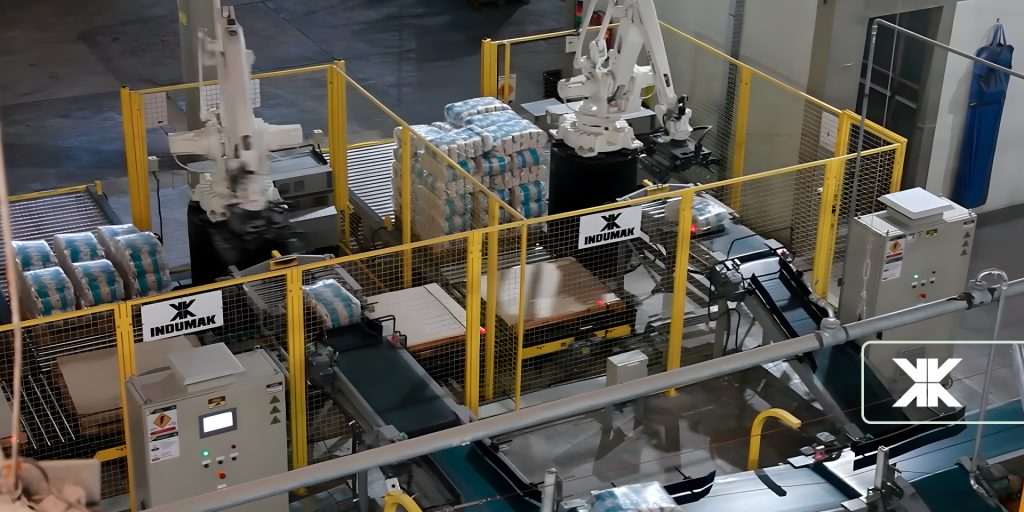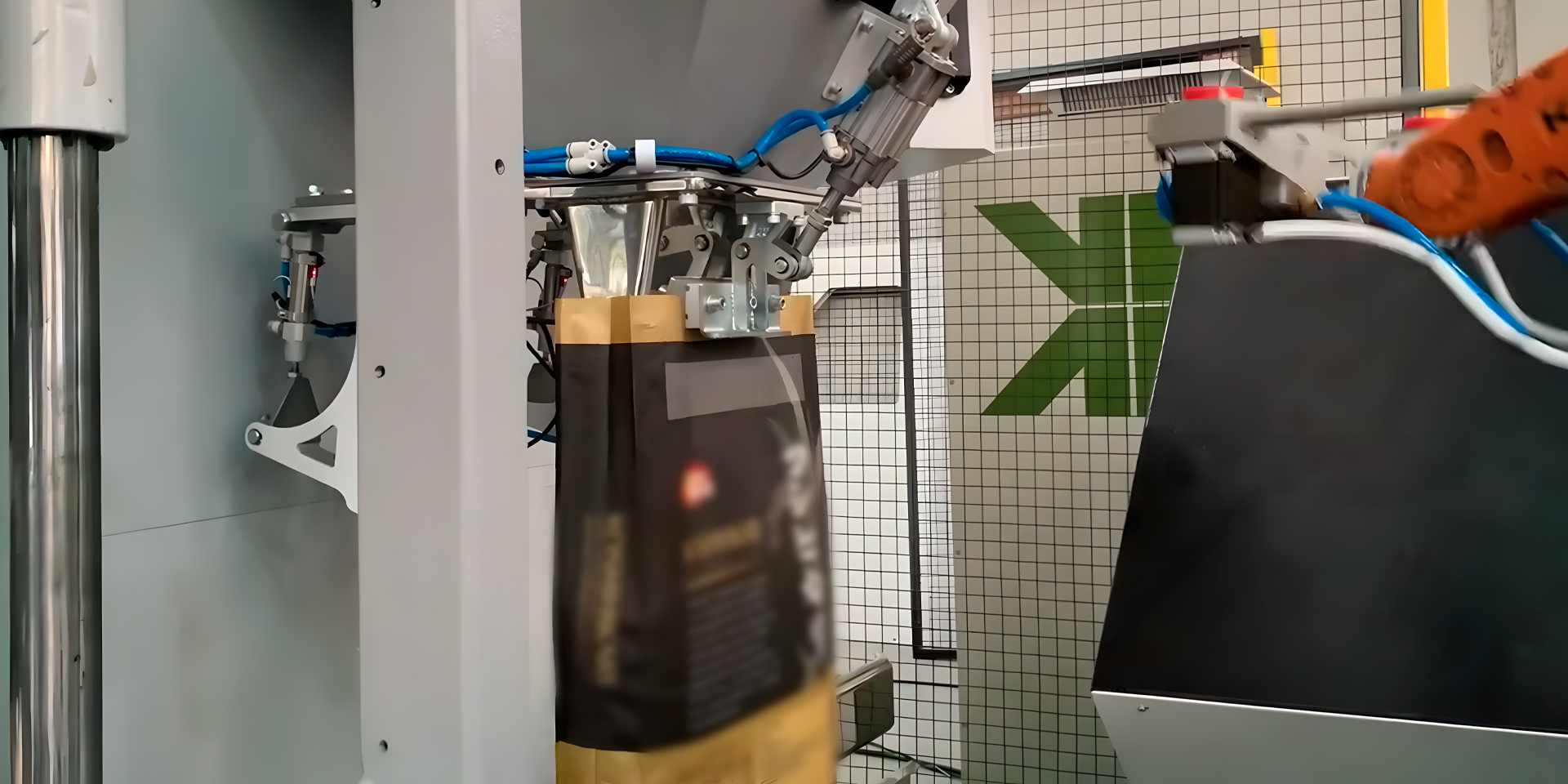
Categoria: Packaging
4 ACTIONS TO OPTIMIZE THE FOOTPRINT OF YOUR INDUSTRY’S PACKAGING LINE
Every foot is extremely important in the footprint of the packaging line and optimizing space in a manufacturing plant is a constant necessity for improving productivity.
Today, we have some tips to help you optimize the footprint of your manufacturing plant and maximize productivity, ensuring the correct and ideal equipment acquisition for your company.
Continue reading to see the best ways to ensure the best use of your spaces.
Also read: How to apply continuous improvement in packaging?
How important is packaging line footprint?
Space optimization aims to make use of the industry’s square foot, but it also promotes the improvement of production flows, which need to be in high synchronization so that all processes are carried out quickly.
Regardless of your industry sector, there are undoubtedly interdependent and inseparably connected processes. In other words, one needs the other to happen. It is these connections that make a production line layout study even more necessary.
The layout study, also known as physical arrangement, is a graphic representation of the industrial park and is used to optimize movements within the factory and also improve intralogistics processes.
These processes are essential for productivity, achieving goals and delivering products on time.
Types of production line footprints and process flows
To determine which physical arrangement will be chosen, it is important to consider the production model adopted by the company. There are, in short, four types of footprint:
Footprint by product or linear
It is a configuration in which machines and workstations are organized sequentially, following the order in which products are processed. In this type of footprint, each production line is dedicated to a specific product or a family of similar products.
This means that all the steps necessary to manufacture this product are carried out in a continuous line, from the beginning to the end of the process, without interruptions or diversions to other production lines.
Footprint by process or functional
In process or functional footprint, also known as functionality footprint, machines and workstations are grouped according to the function or process performed. This means that all machines related to a specific stage of the production process are placed together, regardless of the type of product being manufactured.
This grouping is especially suitable for companies that produce a variety of similar products but go through different manufacturing stages.
Cellular Footprint
Cellular footprint is an approach to production line organization where machines and workstations are grouped into autonomous and interconnected “cells”. Each cell is responsible for carrying out a complete set of operations to produce a specific product or family of products.
The cellular footprint is especially suitable for production environments with variable demand, where it is necessary to produce smaller batches of products flexibly and efficiently.
Fixed or positional footprint
In fixed or positional footprint, materials, tools and equipment remain stationary while the product being manufactured is moved from one station to another.
This type of footprint is commonly used in industries that manufacture large products, such as ships, aircraft and prefabricated structures.
Benefits of Optimizing Packaging Line Footprint
Optimizing the packaging line footprint in an industry can bring a number of significant benefits. Among the main ones are:
Greater productivity
An optimized footprint can help shorten product movement time, reduce waiting times between process steps, and optimize the overall workflow.
This results in faster and more efficient production, allowing the industry to process more products in less time.
Read also: How your factory can gain more productivity and profitability in the production process
Reduction of unscheduled stops
A well-designed and optimized footprint can help minimize or even eliminate bottlenecks in the production line, thus reducing unplanned interruptions.
This can be achieved through various strategies, such as strategic positioning of machines and equipment, efficient material flow design, and implementation of automated conveyor systems.
Less waste of resources
Another benefit is the reduction of waste of resources such as raw materials and working hours, minimizing the excessive use of energy and water, and optimizing the production flow to avoid unnecessary stocks.
This helps the company to save financial resources and adopt more sustainable practices, in line with current environmental concerns.
Better working conditions for employees
An efficient footprint can contribute to creating a safer, more organized and ergonomic work environment.
This may include reducing the need for excessive material movement, minimizing obstacles in the production process, implementing ergonomically designed workstations and reducing the risk of occupational accidents.
By improving employees’ working conditions, the company not only promotes safety and well-being, but also increases team satisfaction and productivity.
Read also: Understand how industrial automation improves employee well-being
Automation of processes at the points where it is most needed
By analyzing and optimizing the packaging line footprint, it is possible to identify the critical points that would benefit most from automation. This allows the company to allocate resources more efficiently, investing in automation where it brings the greatest return on investment.
This way, the company can avoid unnecessary expenses and direct its efforts to areas that really need improvements, increasing operational efficiency and reducing costs.
4 actions to optimize the packaging line layout

After determining the best footprint for your line, there are some productivity actions to make the best use of space and movement between stations and stages. Check out some of them.
Group similar activities and complementary processes
The best way to organize and streamline processes is to group those activities that are related to each other. Thus, palletizing, for example, must be close to the grouping, in order to avoid wasting time and space between one activity and another, with the long journey of moving the bale, which can be harmful.
Download the free e-book: 10 essential processes to keep your factory from stopping
Verticalize
Verticalization is a great way to make use of unused spaces, as factories normally have free high spaces. However, it can also be a necessity in processes such as packaging.
Currently, the most used packaging machines on the market are vertical models, due to the flexibility, production agility, economy and modularity they offer.
For the packaging of grains and powders, for example, the vertical packaging machine is undoubtedly the best option, taking advantage of gravity to guide the product through fillers into packaging, such as pillow packaging, gusseted packaging, flat bottom, 6 seals, 7 seals and stand-up pouch.
Keep equipment and support items nearby
The objective of an optimized line is to avoid stops. Every time someone needs to travel to pick up an item needed for their work, the entire production line is compromised.
Take restrictions into account
There may also be restrictions on the positioning of equipment, and these need to be taken into consideration so as not to harm the performance of the equipment itself. There are, for example, equipment that cannot be close to heat sources. Others may have restrictions regarding humid environments or dirt.
Therefore, in addition to taking into account the integration between processes, it is necessary to be aware of these restrictions so as not to harm the process and generate unnecessary wear and tear or maintenance, or worse, create a flow that will cause problems.
Read also: DISCOVER THE INTERCONNECTIONS OF INDUMAK MACHINES: GUARANTEE OF INCREASED PRODUCTIVITY
Importance of production line footprint for OEE (Overall Equipment Effectiveness)
OEE (Overall Equipment Effectiveness) is the indicator most used by the industry to measure the performance of equipment. It serves to tell you how many good items the equipment produced, compared to the quantity it could have produced.
This is an indicator derived from the lean manufacturing methodology, which has gained wide acceptance among industries for providing a clear view of the productive capacity of machinery and a production line, as well as identifying bottlenecks that need to be resolved. on this equipment or process.
But measuring OEE without first optimizing the packaging line footprint can result in numbers that are incorrect or different from those that represent the maximum performance of the equipment.
You can carry out a preliminary measurement before any optimization, to have a comparison, but we recommend that you follow the tips in this content to ensure a maximized production line, and only then start to effectively measure this indicator.
Count on Indumak
If you are having difficulty optimizing space in your industry, talk to our experts.
Indumak is the leading company in the development of automatic vertical packaging machines, in addition to offering the market solutions that help save space and optimize and automate manufacturing flows in processes such as packaging, baling, bagging, boxing, palletizing and monitoring.
Everything to guarantee maximum productivity and the best performance. Count on Indumak as a partner in your business, get in touch or access the website and find out more.








